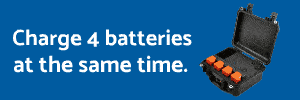- Joined
- Dec 14, 2020
- Messages
- 726
- Reaction score
- 369
In our most recent FAA Safety Team (FAAST) reps update (e.g. learn more at faasafety.gov) we were given some info to pass along including what BigAl07 posted the other day. One of the recurring themes is that of shared airspace, and awareness that manned aircraft may be in the 500' agl (or lower airspace), and, that sUAS e.g. drones might be above 400' agl (authorized or non-authorized).
Key theme and message is that dont assume airspace below 400' agl is just for drones, likewise, for manned aircraft, be on the alert for sUAS when down low.
Also regardless of if a fixed wing plane, backpack parachute, helicopter, ultra-lite or other manned aircraft flies into area where you are operating a sUAS e.g. drone, it is the drone operators responsibility to see, be seen, and avoid yielding to the other aircraft. Does this also mean that there is an emphasis on spreading awareness to manned aircraft operators to also watch out for sUAS/drones? Yes.
The following is an excerpt from our recent FAAST reps update, e.g. "The Airspace We Share".
The U.S. investigations determined the drone operators were either “screen watching” or not looking in the direction where the traditional aircraft was approaching and were surprised by the sudden appearance of another aircraft. Screen watching is a term used to convey the concept of a drone operator primarily looking at the control station display, or viewing the subject of their photography, while not observing the drone and surrounding airspace.
Five of the eight collisions occurred at altitudes above 400 ft. above ground level (AGL). Three collisions occurred below 400 ft. AGL, and in one case the drone operator and helicopter pilot were aware of each other’s presence yet still collided while the drone operator was maneuvering for a better video shot and not scanning the airspace. This drone operator did not use a visual observer.
Key theme and message is that dont assume airspace below 400' agl is just for drones, likewise, for manned aircraft, be on the alert for sUAS when down low.
Also regardless of if a fixed wing plane, backpack parachute, helicopter, ultra-lite or other manned aircraft flies into area where you are operating a sUAS e.g. drone, it is the drone operators responsibility to see, be seen, and avoid yielding to the other aircraft. Does this also mean that there is an emphasis on spreading awareness to manned aircraft operators to also watch out for sUAS/drones? Yes.
The following is an excerpt from our recent FAAST reps update, e.g. "The Airspace We Share".
The Airspace We Share
As of March 2022, there have been six documented cases of drones colliding with helicopters and two with traditional general aviation (GA) fixed-wing aircraft. In all cases, the pilot of the traditional aircraft reported not seeing the drone or seeing it too late to avoid a collision. Additionally in Chile, a drone penetrated the windscreen of a Bell Jet Ranger helicopter and struck a non-flying crewmember in the face, causing lacerations and requiring immediate medical attention.The U.S. investigations determined the drone operators were either “screen watching” or not looking in the direction where the traditional aircraft was approaching and were surprised by the sudden appearance of another aircraft. Screen watching is a term used to convey the concept of a drone operator primarily looking at the control station display, or viewing the subject of their photography, while not observing the drone and surrounding airspace.
Five of the eight collisions occurred at altitudes above 400 ft. above ground level (AGL). Three collisions occurred below 400 ft. AGL, and in one case the drone operator and helicopter pilot were aware of each other’s presence yet still collided while the drone operator was maneuvering for a better video shot and not scanning the airspace. This drone operator did not use a visual observer.




